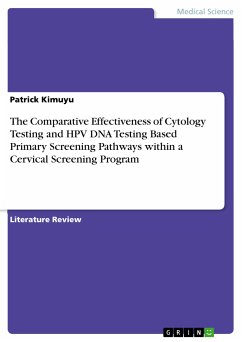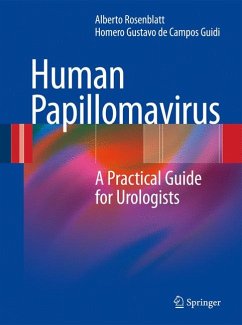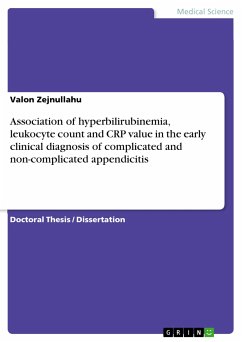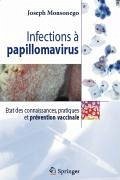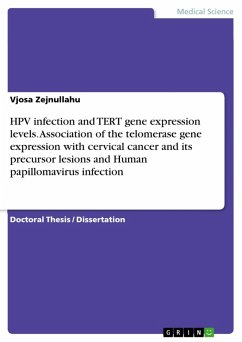
HPV infection and TERT gene expression levels. Association of the telomerase gene expression with cervical cancer and its precursor lesions and Human papillomavirus infection (eBook, PDF)
Versandkostenfrei!
Sofort per Download lieferbar
Statt: 47,95 €**
36,99 €
inkl. MwSt. und vom Verlag festgesetzt.
**Preis der gedruckten Ausgabe (Broschiertes Buch)
Alle Infos zum eBook verschenkenWeitere Ausgaben:

PAYBACK Punkte
0 °P sammeln!
**Preis der gedruckten Ausgabe (Broschiertes Buch)
Doctoral Thesis / Dissertation from the year 2018 in the subject Medicine - Gynecology, Andrology, grade: PhD, , language: English, abstract: The aim of this study is to evaluate the frequency of HPV infection and genotypes among women with normal and abnormal cytological results and its correlation according to the severity of the lesions as well as to investigate the correlation between the TERT gene expression levels and the cytological sub-group and to evaluate the correlation between the HPV infection and TERT gene expression levels as diagnostic and prognostic marker in cervical precurso...
Doctoral Thesis / Dissertation from the year 2018 in the subject Medicine - Gynecology, Andrology, grade: PhD, , language: English, abstract: The aim of this study is to evaluate the frequency of HPV infection and genotypes among women with normal and abnormal cytological results and its correlation according to the severity of the lesions as well as to investigate the correlation between the TERT gene expression levels and the cytological sub-group and to evaluate the correlation between the HPV infection and TERT gene expression levels as diagnostic and prognostic marker in cervical precursor lesions and cervical cancer. Early events associated with disease progression and cervical cancer include hTERT up-regulation at the transcriptional level mediated by high-risk HPV E6 oncoproteins via indefinite mechanisms with concomitant immortal phenotype of the cell in vitro and increased replicative potential of cells in precancerous cervical lesions and cervical cancer. Materials and methods: This study is a prospective observational case-control study conducted in Obstetrics and Gynaecology Clinic in Pristina and Molecular and Biology-Genetics Department in Skopje. Cervical samples from 214 women (median age 45.28 years; range 20-65) from the Outpatient Clinic in University Clinical Center in Kosovo were tested for HPV-DNA and quantitative TERT gene expression after performing conventional Pap smear.
Dieser Download kann aus rechtlichen Gründen nur mit Rechnungsadresse in A, B, BG, CY, CZ, D, DK, EW, E, FIN, F, GR, HR, H, IRL, I, LT, L, LR, M, NL, PL, P, R, S, SLO, SK ausgeliefert werden.




